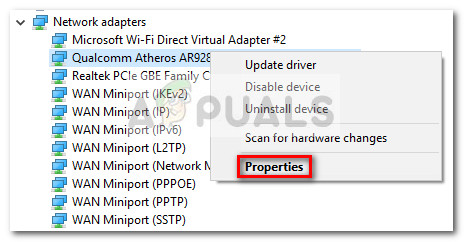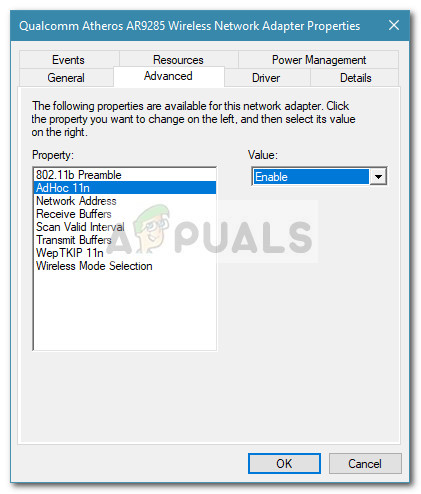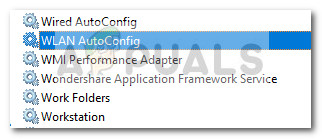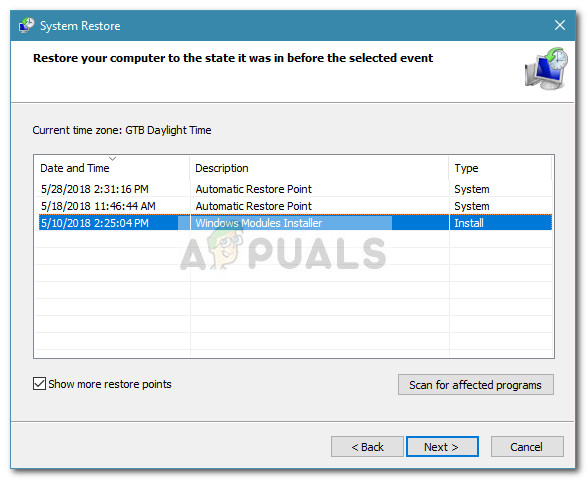Fix: Microsoft Virtual WiFi Miniport Adapter Missing
Some users have been reporting that their Wi-Fi connections are not functioning because Microsoft Virtual Wifi Miniport Adapter is missing. Most users encounter this issue after trying to create a hotspot on their Windows computers. This error typically occurs because the WiFi Miniport Adapter is either removed by mistake or disabled by a 3rd party software.
The WiFi Miniport is essentially a virtual device that only exists after the user has successfully succeeded in setting up a hosted network. When the WiFi Miniport adapter is missing, it will stop being visible inside Device Manager or the Adapter Settings list.
If you’re currently struggling to get the Microsoft Virtual WiFi Miniport Adapter back, this article will help you troubleshoot the issue away. Below you have a collection of methods that other users have used to resolve the issue. Please follow the methods below in order until you find a fix that allows you to retrieve the Microsoft Virtual WiFi Miniport Adapter. Let’s begin!
Method 1: Enabling Multimedia/Gaming Environment and Adhoc support 802.11n
Some users have managed to resolve the issue by modifying some WiFi adapter settings. By enabling Multimedia/Gaming Environment and Adhoc support 802.11n, some users have managed to stop the Microsoft Virtual Wifi Miniport Adapter Missing error from occurring.
Here’s a quick guide on how to enable Multimedia/Gaming Environment and Adhoc support 802.11n from Device Manager:
- Press Windows key + R to open up a Run command. Next, type “devmgmt.msc” and hit Enter to open Device Manager.

- In Device Manager, expand the Network adapters drop-down menu, right-click on your Wi-Fi network adapter driver and choose Properties.

- In the Properties menu, expand the Advanced menu.
- Use the menu under Properties to select AdHoc 11n and set the value to Enable. Then, repeat the same procedure with Adhoc support 802.11n and Multimedia/Gaming Environment.

- Reboot your computer and see if the issue has been resolved at the next startup.
If the Microsoft Virtual WiFi Miniport Adapter is still missing, move down to Method 2.
Method 2: Enabling the WLAN service
Although the WLAN service should be enabled by default, there are certain 3rd party applications (particularly PC optimizers) that will disable this service in an attempt to free up resources.
You can test this theory by visiting the Services screen. If the WLAN service is disabled, you can modify the startup behavior and modify the service to Automatic in order to make sure that you always have it enabled.
Here’s a quick guide on how to do this:
- Press Windows key + R to open up a Run box. Then, type “services.msc” and hit Enter to open the Services screen.

- In the Services screen, scroll down through the list of services and double-click on the service called WLAN.
 Note: If you’re on Windows 10, the service will be named WLAN AutoConfig.
Note: If you’re on Windows 10, the service will be named WLAN AutoConfig. - In the Properties of WLAN (or WLAN AutoConfig) window, go to the General tab and set the Startup type to Automatic.
- Close the Services window and reboot your computer. At the next startup, check Device Manager to see if Microsoft Virtual Wifi Miniport Adapter has reappeared.
If Microsoft Virtual Wifi Miniport Adapter is still missing, move down to Method 3.
Method 3: Using Command Prompt to enable WLAN
If the two methods above have been ineffective, let’s see whether force starting the WLAN service via an elevated Command Prompt will force the Microsoft Virtual Wifi Miniport adapter to re-appear.
Some users have managed to resolve the issue after using a simple command inside Command Prompt. Here’s a quick guide on how to do this:
- Press Windows key + R to open up a Run box. Then, type “cmd” and press Ctrl + Shift + Enter. Next, click Yes at the UAC (User Account Control) prompt to open Command Prompt with administrative privileges.

- Enter the following command in the elevated Command Prompt and hit Enter to start the WLAN service:
netsh wlan set hostednetwork mode=allow
- See if the Microsoft Virtual Wifi Miniport adapter har reappeared among the Network devices.
If the Microsoft Virtual Wifi Miniport adapter is still missing, move down to Method 4.
Method 4: Using a previous system restore point
If all of the above have proven to be ineffective, you might be able to get your Microsoft Virtual Wifi Miniport adapter by using System Restore to revert your PC to a previous state.
The System Restore feature allows Windows users to revert their machine to a previous state. We can use System Restore to revert your computer to a state where the Microsoft Virtual Wifi Miniport adapter was not missing. Here’s a quick guide on how to do this:
- Press Windows key + R to open up a Run box. Next, type “rstrui” and hit Enter to open the System Restore wizard.

- In the first System Restore window, hit Next at the first prompt then check the box near Show more restore points.

- If available, pick a restore point dated before the Microsoft Virtual Wifi Miniport adapter has disappeared from the Network devices list and hit the Next button again.
- Finally, click on Finish to start the restoring process. Your computer will restart and the old state will be mounted at the next startup. See whether the Microsoft Virtual Wifi Miniport adapter has re-appeared. If it’s still missing, move down to the final method below.
Method 5: Doing a Windows Reinstall or Repair Install
If none of the methods above have allowed you to get the Microsoft Virtual Wifi Miniport adapter back, a reinstall is practically your only option left. If you have Windows 10, you can make the process a whole less painful by opting for a repair install.
A repair install reinstalls all windows components while allowing the user to preserve their personal files and applications.
If you don’t have Windows 10, a sure way to fix the default behavior of Microsoft Virtual Wifi Miniport Adapter is to do a clean Windows install.





